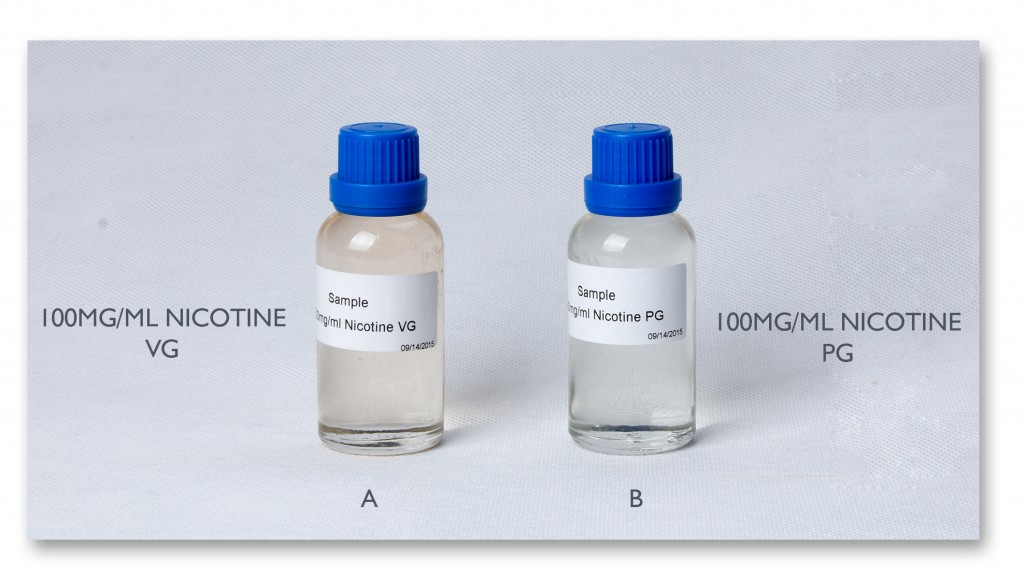The text below appears to indicate an estimate of dermal dose equivalent (to inhalation, by means not specified ?) of Nicotine as nearly 1,000 times larger:
The potential of nicotine to pose a skin absorption hazard was also evaluated, with use of a predictive algorithm for estimating and evaluating the health hazards of dermal exposure to substances [NIOSH 2009]. The evaluation method compares an estimated dose accumulated in the body from skin absorption and an estimated dose from respiratory absorption associated with a reference occupational exposure limit. On the basis of this algorithm, a ratio of the skin dose to the inhalation dose (SI ratio) of 997.7 was calculated for nicotine. An SI ratio of ≥0.1 indicates that skin absorption may significantly contribute to the overall body burden of a substance [NIOSH 2009]; therefore, nicotine is considered to be absorbed through the skin following dermal exposure. Additional information on the SI ratio and the variables used in its calculation are included in the appendix. No estimated dermal lethal dose (LDLo) values for humans were identified. A dermal LD50 value (lethal dose in 50% of exposed animals) of 285 mg/kg has been reported for rats [Gaines 1969]. Because the reported acute dermal LD50 values for rats are lower than the critical dermal LD50 value of 2,000 mg/kg that identifies chemical substances with the potential for systemic toxicity following acute dermal exposure [NIOSH 2009], nicotine is considered toxic after acute dermal exposure.
Source: “NIOSH Skin Notation (SK) Profile Nicotine [CAS No. 54-11-5]” (2015)
.
Nicotine plus flavorings in a propylene glycol (PG) vehicle are the components of electronic cigarette liquids (e-liquids), which are vaporized and inhaled by the user. … In vitro nicotine permeation studies using heat-separated human epidermis were performed with surrogate and two commercial e-liquids, neat and aqueous nicotine donor formulations. Steady-state fluxes ( J ss), and lag times ( t lag) were measured for each formulation. In addition, transient (4 h) exposure and finite dose (1–10 μ l/cm2) experiments were undertaken using one commercial e-liquid. Average J ss (μg/cm2/h) from formulations were: nicotine in PG (24 mg/ml): 3.97; commercial e-liquid containing menthol (25 mg/ml nicotine): 10.2; commercial e-liquid containing limonene (25 mg/ml nicotine): 23.7; neat nicotine: 175. E-liquid lag times ranged from 5 to 10 h.
Absorbed fraction of nicotine from finite doses was ≈0.3 at 48 h. … The data demonstrate the potential for significant nicotine absorption through skin contact with e-cigarette refill solutions and the neat nicotine used to mix them. …
… This hazard is particularly acute in occupational settings in which workers mix e-liquids from neat nicotine and other constituents, and fill cartridges from tanks of e-liquid. The use of personal protective equipment, including adequate gloves, is essential. The same applies to individuals who mix their own e-liquids for personal consumption. Neat nicotine is particularly hazardous, with a steady-state flux over 7 times greater than that of the higher permeating e-liquid, Lemon-Lime eJuice.
Casual contact by end users, on the other hand, appears to be less hazardous. A worst-case scenario, in which the entire contents of one e-cigarette cartridge are spread over the body in a thin film, suggests less than 8 mg of nicotine absorption, over a time course exceeding 24 h. The dermal uptake estimations presented here are not intended to be definitive. Many different factors could contribute to different outcomes, and e-liquid mixtures with different nicotine contents should be evaluated accordingly.

